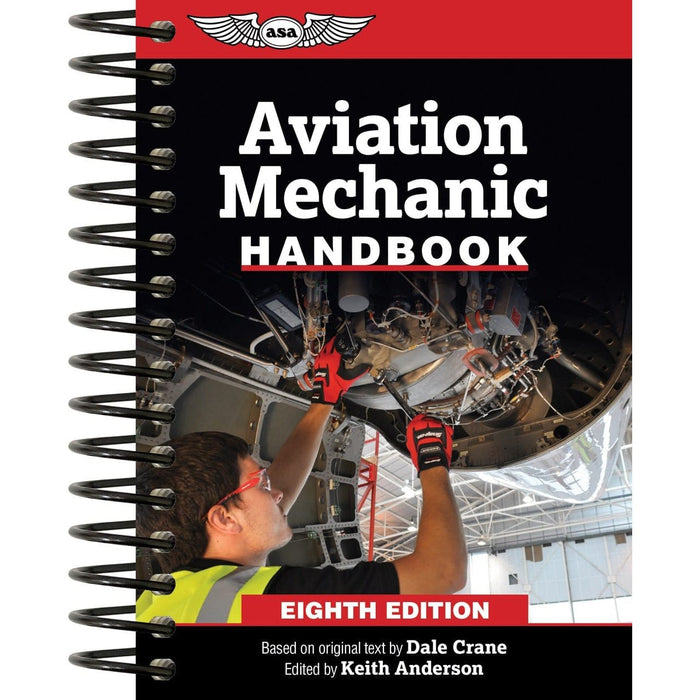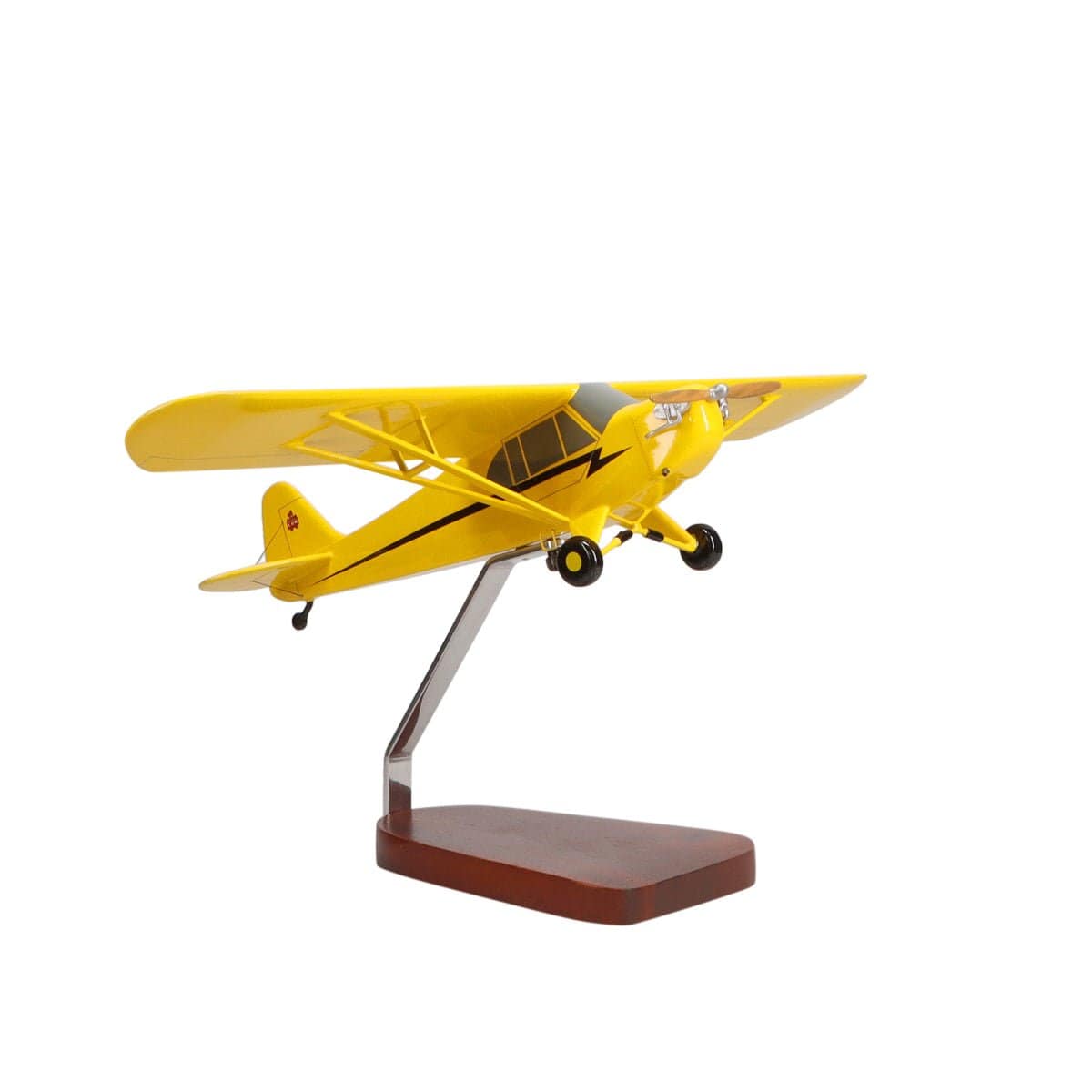Join us on a journey through aviation history with the Grumman Goose. From its inception as a commuter aircraft for New York's elite to its wartime utility and post-war commercial service, the Goose's story is one of innovation and adaptability.
Learn about its key design features, rich history, and diverse variants–read on for a flight through time and technology that shaped the iconic Grumman Goose.
Table of Contents
- Designing the Grumman Goose
- Grumman Goose G-21A Specifications
- Grumman Goose G-21A Performance
- Key Design Features of the Grumman Goose
- History of the Grumman Goose
- Airworthy Grumman Goose Planes in the 21st Century
- Flying the Grumman Goose
- Variants of the Grumman Goose
 Designing the Grumman Goose
Designing the Grumman Goose
In 1936, Leroy Grumman of Grumman Aircraft Engineering Corporation was approached by a group of ten wealthy New York aviator-businessmen. These men were looking for someone to design and build a replacement plane for the unwieldy Loening Air Yacht they were currently using as a commuter aircraft between home and work.
Their ideal aircraft would still be an light amphibious transport biplane but with improved flight characteristics, handling characteristics, and visual appeal. Grumman accepted the challenge and collaborated with designer William Schwendler and hydrodynamicist Ralston Stalb to create the new design.
For the original client base of commuting businessmen, handling characteristics were the most important focus, and that is reflected in the design. Speed and efficiency came secondary.
The Goose represents several important firsts for the Grumman design team. It is Grumman’s first single-wing aircraft, first twin-engine aircraft, and first commercial airliner. The finished product was a modern delight whose first test flight was completed in the early summer of 1937.
A mere 5 weeks later, the first batch of twelve G-21 Goose planes were ordered for their eager customers.
Grumman Goose G-21A Specifications
- Engine: Twin Engine, 2 x Pratt and Whitney R-985 Wasp Junior, 9-cylinder radial
- Horsepower: 450 hp each
- Propeller: 2 x Hartzell 2-blade constant speed
- Length: 38 feet 5 inches
- Height: 12 feet
- Wingspan: 49 feet 1 inch
- Wing Area: 378 square feet
- Seats: 2 crew + up to 7 passengers
- Empty Weight: 5,425 pounds
- Maximum Gross Weight: 8,000 pounds
- Useful Load: 2,575 pounds
- Fuel Capacity: 220 gallons
Grumman Goose G-21A Performance
- Rate of Climb, Sea Level: 1,300 feet per minute
- Top Speed: 201 miles per hour
- Cruise Speed: 191 miles per hour
- Fuel Consumption: 50 gallons per hour
- Range: 695 miles
- Service Ceiling: 21,300 feet
Key Design Features of the Grumman Goose
In its original bid to serve as the successor to the Leoning Air Yacht, the Goose was designed with certain key features that would set it apart and earn it a spot in history.
For the original client base of commuting businessmen, handling characteristics were the most important focus, and that is reflected in the design. Speed and efficiency came secondary.
- Mono-hull with both conventional landing gear and floats
As a dedicated amphibious aircraft, water handling performance was important to the Goose’s success. To that end, the Grumman designers opted for a stable mono-hull design supported by large balanced floats under each wing.
Also improving water handling was the ship-like shape of the fuselage with its narrower nose and deep body.
Like any true amphibious aircraft, the Goose came outfitted and prepared for both land and water operations. Standard wheeled landing gear could be extended using a hand crank and retracted with the aid of an electric motor.
- Nearly all-metal construction

At the time when Leroy Grumman created the Goose, aircraft designers and manufacturers had just begun to transition away from the more traditional wood and fabric-covered constructions of the early 1900s.
Grumman's first aircraft stood out as a modern plane with its predominantly metal airframe whose only exterior fabric was found on the trailing half of the wings and the control surfaces (excluding flaps).
- Customizable interior cabin layout
It is hard to envision a single plane that can fill both the roles of a flying boat and practical military utility transport, but Grumman made it happen. The Goose was designed for a customizable interior cabin layout and the fuselage depth which aided in aquatic handling also lent itself to ample cabin space.
The original design catered to the preferences of wealthy businessmen included such luxuries as a bar and toilet onboard for high-end comfortable, stylish, and enjoyable travel, but the cabin could easily be left open or modified to suit specific military purposes.
History of the Grumman Goose

The Grumman Goose was manufactured from 1937 until 1945. While the initial concept of the Goose may have been as an “air yacht” for affluent New York businessmen looking for a way to commute from their Long Island homes to their Manhattan offices.
The Royal Canadian Air Force was quick to acknowledge the capabilities of the Goose aircraft. As World War II escalated, these planes were utilized by the US Navy and Air Force for various tasks. Production of the Goose came to an end with a grand total of 345 being manufactured.
In the post-war years, the Goose’s fixed wing float option and excellent handling characteristics in strong winds and rough water made it a go-to commercial seaplane in the tropics of the Caribbean, along the California coast, and in the chilly and unforgiving Alaskan wilderness including the Aleutian Islands.
Alaska was one of the main bases for much of the Goose fleet, and up until 2012, commercial Goose air carrier service was still operating out of Dutch Harbor, Alaska.
In addition to the renowned Grumman Widgeon and Albatross, the Grumman Aircraft Engineering Corporation crafted various other aircrafts. These included PBYs and Gooses which were operated by Alaska Coastal/Ellis airlines until further mergers led to the formation of present-day Alaska Airlines.
Airworthy Grumman Goose Planes in the 21st Century
The Goose may no longer be used for commercial purposes, but a select group of private owners still maintain and fly their Grumman Goose planes. It is estimated that there are currently about 30 airworthy Gooses. Many of these planes have been converted to turboprops.
The Goose with serial number B-81, known by its tail number N703, was fully restored to nearly original condition and has been flying in and around Anchorage, Alaska since 1996. Tail N703 was even featured on the cover of Warbirds Magazine in August of 1998.
Pilots who have dreamed of flying a Goose are in luck. The N703 is available for flight instruction tours through The Goose Hangar Alaskan flight school. Practice your mountain flying, water landings, beaching, anchoring, and amphibious operations in the Alaskan wilderness while flying one of the iconic Alaskan planes.
Flying the Grumman Goose
For the lucky pilot who is given the opportunity, the Grumman Goose is a pleasure to fly with a tendency towards straight flight. The Goose also displays excellent seaplane handling even in heavy winds and rough seas thanks to the mono-hull design and float supports.
As the team at The Goose Hangar says, “The Goose is a well-balanced, responsive airplane that has a good feel to it and is one of those airplanes that is just enjoyable to fly.” Ultimately, the beauty of the Grumman Goose is that it is well-designed, well-built, and handles wonderfully.
Variants of the Grumman Goose

Even with an arguably excellent aircraft, there is always room for improvements and tweaks. In the case of the Grumman Goose, some of the variants were military-specific while others improved on the power and fuel capacity of the original.
- OA 9-13B Variants
The United States Army was one of the first branches of the military to invest in a substantial quantity of G-21 planes. The Army variants used by the U.S. Army Air Forces (USAAF) were designated OA-9, OA-13A, and OA-13B with “OA” indicating that the craft were designed to be used for aerial operations (or “operations – aerial” as the military designation would read).
- JRF 1-6 Variants
The United States Coast Guard and US Navy versions of the Goose – JRF-1, JRF-1A, JRF-2, JRF-3, JRF-4, JRF-5, JRF-6B – accounted for most of the Goose variants. These planes were built to carry cameras, stretchers, bombs and more. The military variants were used for utility, transport, and even antisubmarine missions.
- Goose Mk I-II Variants
The British military also saw the value of the G-21, and they commissioned three variants – the Goose Mk I, Goose Mk IA, and Goose Mk II – to be used by their Naval Air Squadrons and as staff transports. It was actually the British who gave the Grumman G-21 its “Goose” nickname.
Argentina, Australia, Bolivia, Brazil, Canada, Cuba, France, Honduras, Paraguay, Peru, Portugal, and Sweden also used Grumman Goose planes for military service, although they did not commission their own special variants of the design.
- Civilian G-21A
The first civil aircraft variant of the G-21, the G-21A, reinforced the original’s construction and brought the gross weight from 7,500 pounds up to 8,000 pounds. Eventually most of the original G-21 planes were upgraded to meet the G-21A standards.
- G-21B
Next up was the G-21B. This custom design was created for the Portuguese Navy’s aviation component. Twelve Goose aircraft were outfitted with .30 caliber machine guns plus two 100-pound bombs.
- G-21C
The G-21C conversion was done by McKinnon Enterprises. The aircraft was repowered with four 340 horsepower Lycoming GSO-480-B2D6 engines.
The G-21C Goose also got an upgraded fiberglass radar nose, a wraparound windshield, enlarged cabin windows, and retractable wingtip floats to help decrease drag. With all the add-ons, the G-21C topped out at 12,500 pounds gross weight.
- G-21D to G-21G
The G-21D, G-21E, G-21F, and G-21G conversions were only done on a few aircraft. The G-21D “Turbo-Goose” featured two Pratt & Whitney turboprop engines plus electric flaps.
The G-21E was a turbine conversion of the G -21C. The G-21F was an Alaskan Fish and Wildlife service-specific conversion concept which ultimately never received Federal Aviation Administration (FAA) approval, and the G-21G swapped the original engines out for 680 horsepower PT6A-27 models plus the ability to accommodate 586 gallons of fuel for a 12,500 pound gross weight.
Want to learn about different types of aircraft?
Our guides provide everything you need to know.
Did you find this article helpful?
Do you think we missed anything important? Let us know in the comments below!










2 comments
Dave
Per: “The Army variants used by the U.S. Army Air Forces (USAAF) were designated OA-9, OA-13A, and OA-13B with “OA” indicating that the craft were designed to be used for aerial operations (or “operations – aerial” as the military designation would read.” If you think about it, “aerial” would be a redundant designation for any aircraft. I believe that the correct interpretation of the “OA” designation is “Observation Amphibian”
Dave
The first civilian variant of the G-21, the G-21A, reinforced the original’s construction and brought the gross weight from 7,500 pounds up to 8,000 pounds. Eventually most of the original G-21 planes were upgraded to meet the G-21A standards.
Next up was the G-21B. This custom design was created for the Portuguese Navy’s aviation component. Twelve Goose aircraft were outfitted with .30 caliber machine guns plus two 100-pound bombs.
The G-21C conversion was done by McKinnon Enterprises. The aircraft was repowered with four 340 horsepower Lycoming GSO-480-B2D6 engines. The G-21C Goose also got an upgraded fiberglass radar nose, a wraparound windshield, enlarged cabin windows, and retractable wingtip floats to help decrease drag. With all the add-ons, the G-21C topped out at 12,500 pounds gross weight.
The G-21D, G-21E, G-21F, and G-21G conversions were only done on a few aircraft. The G-21D “Turbo-Goose” featured two Pratt & Whitney turboprop engines plus electric flaps. The G-21E was a turbine conversion of the G -21C. The G-21F was an Alaskan Fish and Wildlife service-specific conversion concept which ultimately never received FAA approval, and the G-21G swapped the original engines out for 680 horsepower PT6A-27 models plus the ability to accommodate 586 gallons of fuel for a 12,500 pound gross weight.
Grumman Goose G-21A Specifications
Engine: 2 x Pratt & Whitney R-985 Wasp Junior, 9-cylinder radial
Horsepower: 450 hp each
Propeller: 2 x Hartzell 2-blade constant speed
Length: 38 feet 5 inches
Height: 12 feet
Wingspan: 49 feet 1 inch
Wing Area: 378 square feet
Seats: 2 crew + up to 7 passengers
1. The “first” civilian variant was the G-21, not the G-21A. The very first aircraft built, serial nos. 1001 through 1012, were models G-21 and they were built for civilian customers. Most that survived a few years were eventually upgraded to G-21A standards.
2. The certified maximum gross weight of the McKinnon models G-21C and G-21D is 12,499 lbs. – presumably because he was confused about the regulation pertaining to “Small” aircraft and single-pilot operation.
3. Just like the G-21D through G-21G, the G-21C too was “built” (i.e., converted in very small numbers.
a. In fact, there were only 2 true model G-21C aircraft converted with four Lycoming GSO-480-B2D6 piston engines per Section 1 of TC no. 4A24. They were former Grumman serial nos. 1147 and B-78, a model JRF-6B and a JRF-5 respectively. They became McKinnon serial nos. 1201 and 1202 respectively. Serial 1201 was registered as N150M and serial no. 1202 was originally N3459C before being sold to the govt. of East Pakistan as AP-AUY, After that country split off and became Bangladesh, it became S2-AAD.
b. There was only one model G-21D ever built and it was in fact a re-conversion of N150M, G-21C serial no. 1201. McKinnon added a 36-inch longer nose section containing 4 passenger seats in the forward baggage area and an extra 12 inches to each horizontal stabilizer to compensate for the added weight up front. That aircraft became G-21D serial no. 1251 in June 1960. At that point, it still had four 340 hp. Lycoming GSO-480-B2D6 supercharged, piston engines. In 1966-1967, it was converted one more time to remove the four piston engines and became the prototype for all of McKinnon’s later turbine Goose conversions via the installation of two 550 shp PT6A-20 turboprops. With the reduction of total horsepower from 1,360 down to 1,100, its gross weight was similarly reduced from 12,499 lbs. down to 12,200 lbs.
c. The two so-called “G-21C” turboprop conversions that McKinnon built in 1968, serial nos. 1203 and 1204 (C-FBCI and N642 respectively) were in fact not really valid models “G-21C” at all since they lacked most of the internal structural reinforcements that allowed the 12,500 lb. max gross weight. They were instead certified only to 10,500 lbs. with the 550 shp PT6A-20 engines initially installed. Subsequent owners later claimed to have upgraded them to the fully reinforced 12,500 configuration of the later model G-21G along with the more powerful 680 shp PT6A-27 or 28 engines, but that strictly speaking did not make them valid models G-21C or G-21G, especially still identified as “McKinnon” products. Technically speaking, they were amateur-built copies of the McKinnon designs. At time of their recertification, they were actually identical to the later McKinnon model G-21E which had yet to be approved by the FAA – as it was a year later in July 1969 with the same 10,500 lb. maximum gross weight. A “real” G-21C if converted with two 680 shp PT6A-27 engines would be the equivalent of the model G-21G.
d. Only one aircraft was ever officially converted as a model G-21E by McKinnon; it was former G-21A serial no. 1013 which became McKinnon serial no. 1211, which was registered as N121H. Unlike almost every other McKinnon Goose conversion however it never got any of the enlarged cabin windows and forever retained its stock, small, Grumman cabin windows.
e. Only two aircraft were ever converted as models G-21G actually by McKinnon. Every other aircraft ever identified as such was really an amateur-built copy converted or upgraded by subsequent owners. As such, they properly speaking should never have been formally identified as “McKinnon” aircraft since FAA regulations pertaining to aircraft type identification stipulate that they are to be identified on the basis of who built them, not who designed or them or who owns the TC under which they are nominally certified. And “conversions” are covered under Part 21 manufacturing or building regulations, not Part 43 maintenance or major alterations regulations. The only two “real” McKinnon model G-21G conversions were ex-Grumman serials B-62 and B-125, both of which were originally built as US Navy models JRF-5. They are still airworthy and registered as N77AQ and N70AL respectively.
4. Gooses originally had two 2-bladed Hamilton Standard props. Most contemporary Gooses have been retrofitted by means of an STC with 3-bladed Hartzells.
5. Per the US Navy model JRF-5 pilot’s handbook, the correct length of a Goose is 34 feet, 4 inches.
6. By the same standard, the correct heights are 15 feet 11 inches in level or “take-off” attitude rolling on just the main gear or 14 feet 6 ½ inches in 3-point attitude sitting on all 3 gear.
7. Again by the same standard and per Grumman assembly drawings as well, the wingspan of an unmodified Goose (fixed wingtip floats) is 49 feet even. (49’ 0”)
8. The correct value for the wing area of a standard, i.e. unmodified Goose is 375 sq. ft.
9. The G-21A is certified for a total of 8 seats; 2 in the cockpit and 6 in the cabin. They may be used for 1 pilot and 7 passengers but however they are arranged, the total is not supposed to exceed 8 people. I don’t know how, but many Gooses operated in commercial service over the years acted like they were allowed to carry up to 10 passengers, but that was not legal without some kind of STC certification.